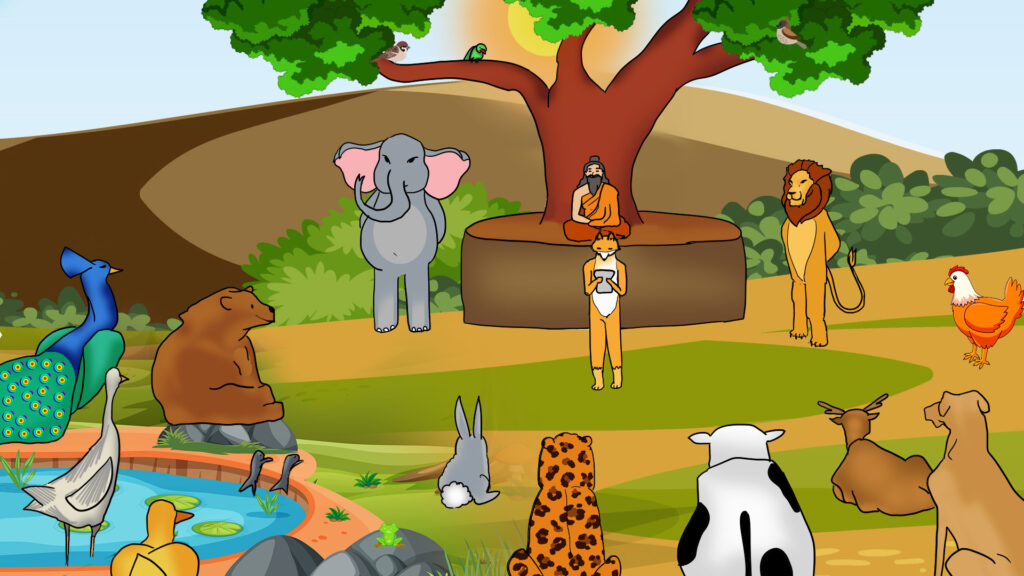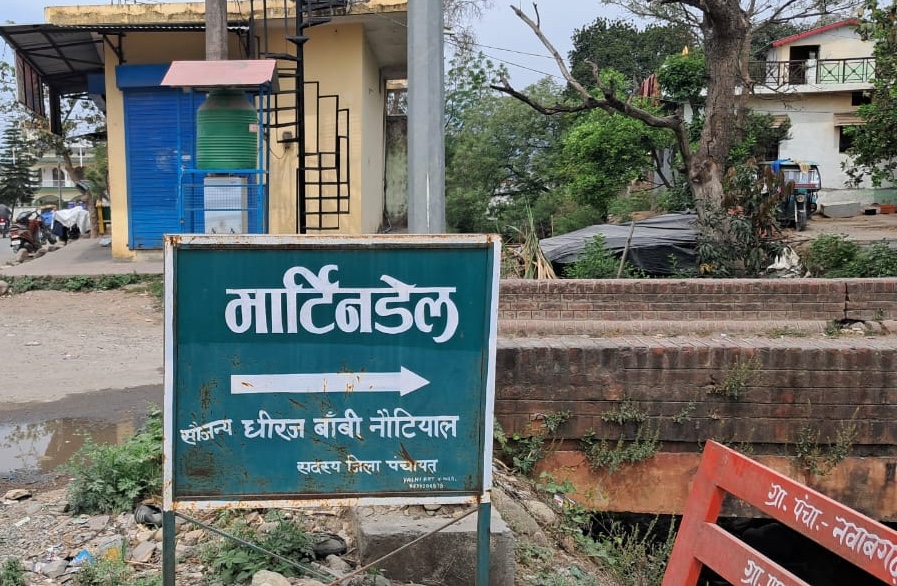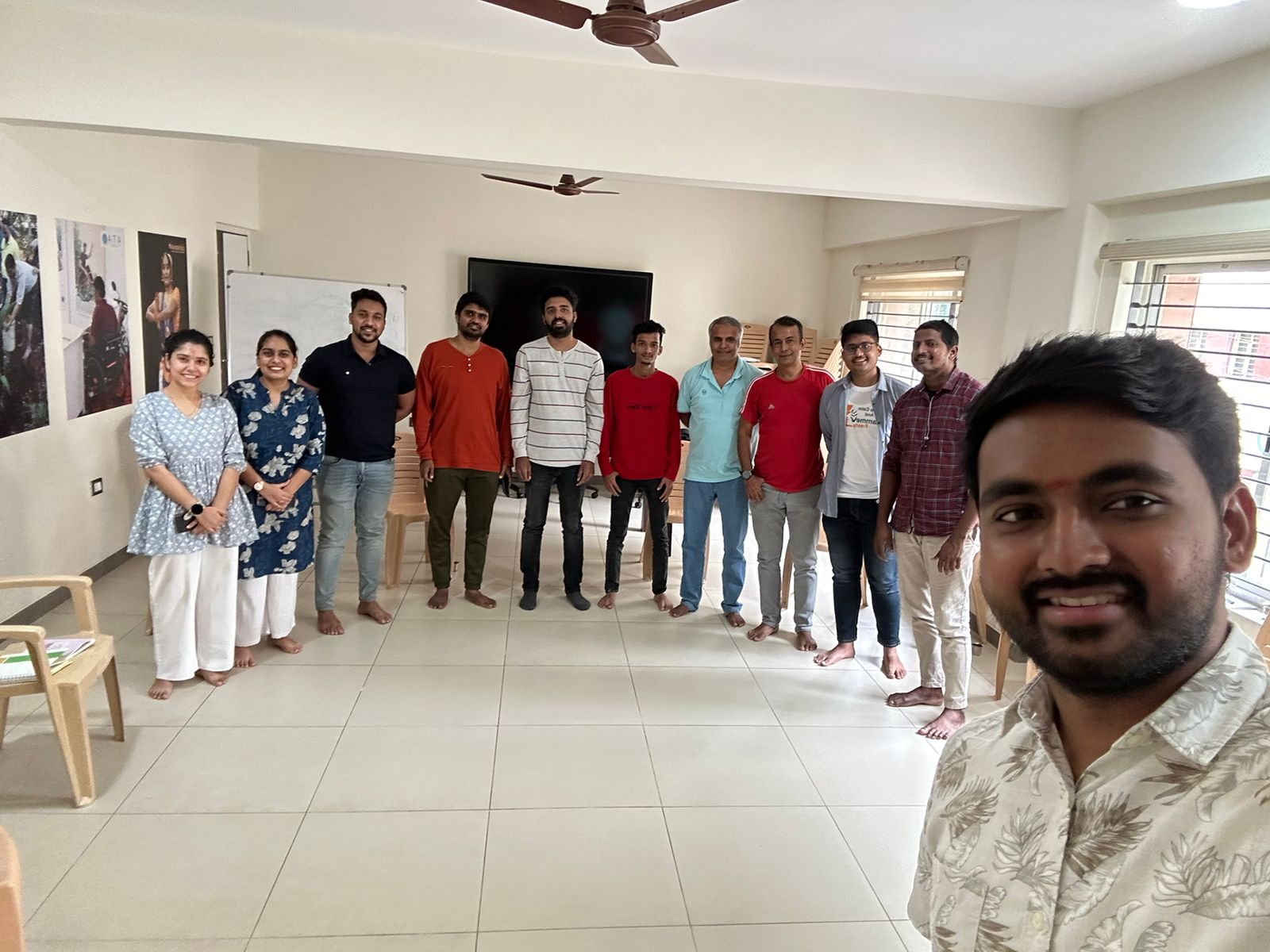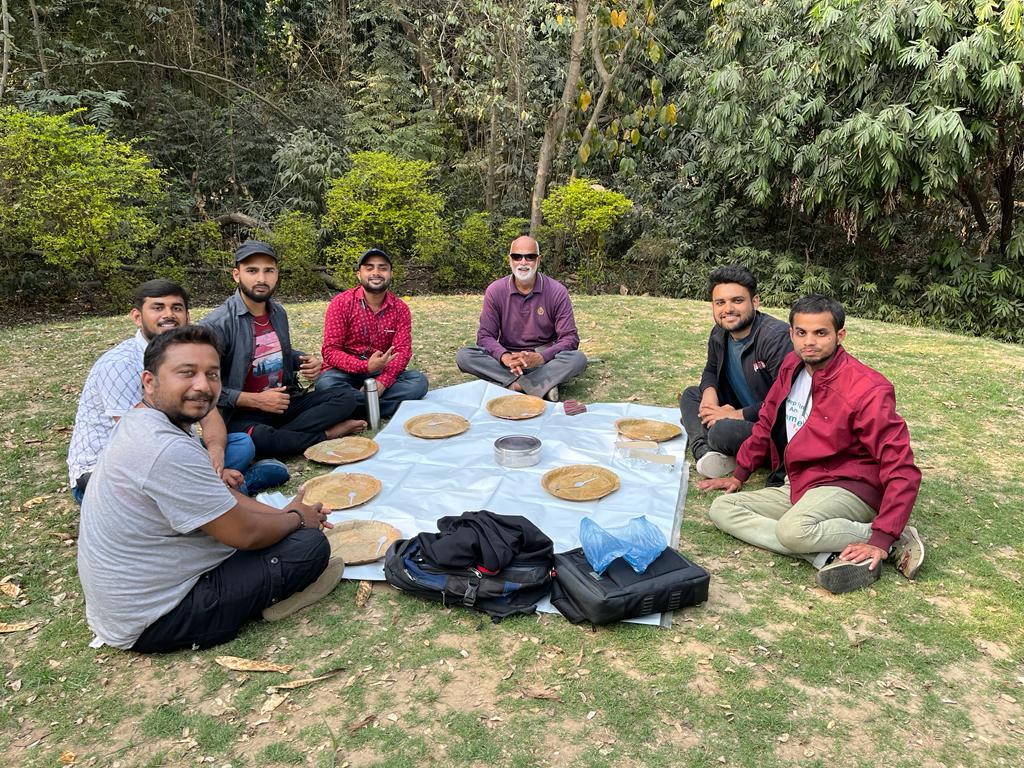
The fact is- it was a picnic, a get-together, which we gave a fanciful name of “mini-workshop” 
Thought Experiment: Black and white stones
A tyrant landlord in Europe has been grabbing lands of tenants indebted to him, using a ruse. He carries a snuff box containing two little stones- white and black. When the tenant cannot repay his debt, the landlord offers him a chance: if you pick up the White stone blindly from this snuff box, I will wave off all your debt. But if you pick up the black one, you will forfeit all your lands to me.
Farmers have invariably lost their lands to him. His next target is a farmer with a beautiful daughter. The landlord offers him the gamble of the snuff-box, but with a twist: if you pick up the white stone, you are a free man; if you pick up the black one, I will marry your daughter.
But the clever girl intervenes: Since my life is at stake, let me pick up the stone!
The landlord agrees. The girl wins the game. How did she do it?
Answers not allowed: She did not hide a white stone in her hand and switch it. She did not call the police. She did not poison the landlord. She picked up a stone blindly out of the snuff box and….THINK what she did next!
Riddle: Nine dots
There are nine dots in the shape of a square (see below). Using only 4 straight lines, we have to cross all nine dots. Pen should not leave the paper till you finish and you can not overwrite a line.
As we played out these challenges, we understood that convergent thinking and divergent thinking, both have their place and time. Like Arjun, the archer from the Indian classics, being able to see only the bird’s eye, while shooting- is a good strategy during the implementation phase- but not during the planning/problem-solving phase. For the latter, we must allow our focus to broaden (to see the bird, tree, forest -everything), to consider factors further away from the given problem, as in the case of nine dots. The solution may not be hidden in the little square itself, represented by the 9 dots.
But why do we get extremely focused when we face a problem? Mother Nature has provided us with a strong sympathetic system, controlled by our primitive (“lizard”) brains. When we “perceive” (-may not be true-) threat, this primitive brain shuts down the higher brain and puts the sympathetic nervous system in motion- which readies us for fight, flight, or freeze response – by narrowing our sense perception to a perceived threat. So if we see (or think we see) a snake, we can see only the snake – NOT the stick lying a few feet away. The original purpose was to make sure that we don’t get distracted when survival is at stake.
So, the challenge is: how can we start seeing an opportunity in the snake or around it (in our stammering, or in the upcoming presentation)- instead of an existential threat? Can this be done? Neuroscience believes that it can be done, by practice of divergent thinking, by explorations, etc.
Solution: 9 dots
We need to go beyond the “problem” to find the solution (below).
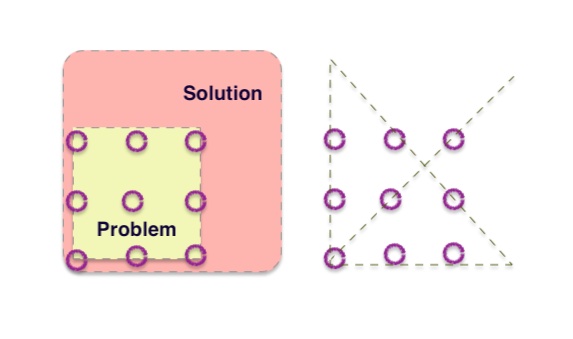
We concluded the brainstorming exercise by discussing how we can employ lateral thinking skills to problems of daily life, including stammering.
Accounts: No cash collected. Everyone contributed resources: food, fruits etc.


